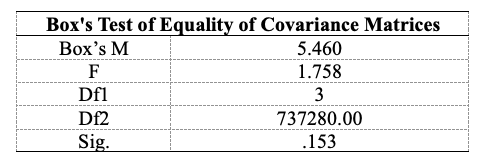Applying The Egra Technique in Teaching Simple Present Tense and Simple Past Tense
https://doi.org/10.51574/jrip.v4i3.1798
Keywords:
EGRA Technique, Simple Present Tense, Simple Past TenseAbstract
This study aimed to determine whether there is a difference in the mastery of simple present and past tense, especially in the writing aspect, between the tenth-grade students learning using the EGRA technique and the Lecturing technique at MA Ushuluddin Singkawang. This study employed a quantitative method with a quasi-experimental design. The study population is 150 students, and the sampling technique is cluster random sampling. We selected the participants from two classes of tenth-grade students from MA Ushuluddin Singkawang academic year 2023/2024, dividing them into the control and experimental groups. This study employs a test that consists of a pretest and a posttest. In this research, the data analysis technique was MANOVA (Multivariate Analysis of Variances). In the findings, the researcher indicated that each test showed a significant result. Finally, the researcher employed MANOVA to address the hypothesis testing. The researcher discovered a significance level of 0.00, less than 0.05, in the results, leading to the acceptance of Ha1, Ha2, and Ha3, and the rejection of H01, H02, and H03. The conclusion is that there is a difference in the mastery of simple present tense and simple past tense, whether one by one or simultaneously, especially in the writing aspect, between the tenth-grade students who are learning using the EGRA Technique and the Lecturing technique at Ma Ushuluddin Singkawang.
Downloads
References
Akmajian, A., Farmer, A. K., Bickmore, L., Demers, R. A., & Harnish, R. M. (2017). Linguistics: An introduction to language and communication. MIT press.
Allerton, D. J. (2016). Essentials of grammatical theory: A consensus view of syntax and morphology. Routledge.
Bildiren, A., Bıkmaz Bilgen, Ö., & Korkmaz, M. (2021). National non-verbal cognitive ability test (BNV) development study. SAGE Open, 11(3), 21582440211046944. https://doi.org/10.1177/21582440211046945
Chomsky, N. (2011). Language and other cognitive systems. What is special about language? Language Learning and Development, 7(4), 263–278. https://doi.org/10.1080/15475441.2011.584041
Creswell, J. W., & Creswell, J. D. (2017). Research design: Qualitative, quantitative, and mixed methods approaches. SAGE Publications Inc.
Duong, D., & Solomon, B. D. (2024). Analysis of large-language model versus human performance for genetics questions. European Journal of Human Genetics, 32(4), 466–468. https://doi.org/10.1038/s41431-023-01396-8
Dwi, W. (2021). Using EGRA Technique to Improve Students’ Grammar Mastery. Inspiring: English Education Journal, 4(1), 16–24. https://doi.org/10.35905/inspiring.v4i1.1523
Fatoni, M., Audytra, H., & Ardiyanti, L. (2018). EGRA Technique to Improve Students Ability in Using Simple Past Tense. EDUTEC: Journal of Education And Technology, 1(2), 137–144. http://ejournal.ijshs.org/index.php/edu/article/view/87
Godina, R., & Matias, J. C. O. (2018). Improvement of the statistical process control through an enhanced test of normality. 2018 7th International Conference on Industrial Technology and Management (ICITM), 17–21. https://doi.org/10.1109/ICITM.2018.8333912
Kumayas, T., & Lengkoan, F. (2023). The challenges of teaching grammar at the university level: Learning from the experience of English lecturer. Journal of English Culture, Language, Literature and Education, 11(1), 98–105. https://doi.org/10.53682/eclue.v11i1.6058
Lindström, C. (2017). Two tenses are better than one: Using contrast and complexity to develop grammatical understanding. International Journal for Lesson and Learning Studies, 6(2), 124–134. https://doi.org/10.1108/IJLLS-10-2016-0034
Listia, R., & Febriyanti, E. R. (2020). EFL learners’ problems in using tenses: an insight for grammar teaching. IJET (Indonesian Journal of English Teaching), 9(1), 86–95. https://doi.org/10.15642/ijet2.2020.9.1.86-95
Mishra, P., Pandey, C. M., Singh, U., Gupta, A., Sahu, C., & Keshri, A. (2019). Descriptive statistics and normality tests for statistical data. Annals of Cardiac Anaesthesia, 22(1), 67–72. https://doi.org/10.4103/aca.ACA_157_18
Pilu, R., Hardianto, H., & Supraba, A. (2020). The Effectiveness of EGRA (Exposure, Generalization, Reinforcement, Application) Method in Teaching. Jurnal Studi Guru Dan Pembelajaran, 3(1), 87–96. https://doi.org/10.30605/jsgp.3.1.2020.247
Puladi, B., Gsaxner, C., Kleesiek, J., Hölzle, F., Röhrig, R., & Egger, J. (2023). The impact and opportunities of large language models like ChatGPT in oral and maxillofacial surgery: a narrative review. International Journal of Oral and Maxillofacial Surgery. https://doi.org/10.1016/j.ijom.2023.09.005
Purba, A., Pasaribu, A. N., Elfrida, R., & Pasaribu, T. K. (2023). Errors in Using English Verbs by EFL Students: Tenses and Aspects Analyses. SCOPE: Journal of English Language Teaching, 7(2), 137–142. https://doi.org/10.30998/scope.v7i2.16437
Saputra, A., Hakim, M. A. R., Saputra, E., & RAHMA, Y. N. (2020). The Difficulties Faced by Indonesian EFL Learners in Pronouncing" S" and" Es" Suffixes in the Simple Present Tense Verbs and in Plural Form of Nouns. Linguists: Journal Of Linguistics and Language Teaching, 6(1), 55–65. https://doi.org/10.29300/ling.v6i1.3938
Sedić, A., Pavković, D., & Firak, M. (2015). A methodology for normal distribution-based statistical characterization of long-term insolation by means of historical data. Solar Energy, 122, 440–454. https://doi.org/10.1016/j.solener.2015.09.014
Tomasello, M., & Brooks, P. J. (2016). Early syntactic development: A construction grammar approach. In The development of language (pp. 161–190). Psychology Press.
Wahyu, G. E., & Citrawati, N. P. E. W. (2022). The effectiveness of egra technique to improve students’ writing skills. Journal of Applied Studies in Language, 6(1), 64–72. https://doi.org/10.31940/jasl.v6i1.444
Yeunsak, S., Sriwichai, C., Duangfai, C., & Paichareon, N. (2022). A Development of English Proficiency Test of Undergraduate English Major Students of University of Phayao. Journal of MCU Humanities Review, 8(2), 353–368.
Zaenap, S. (2019). The use of EGRA technique in teaching passive voice for EFL classroom. Voices of English Language Education Society, 3(1). https://doi.org/10.29408/veles.v3i1.1019

Downloads
Published
How to Cite
Issue
Section
License
Copyright (c) 2024 Rita M, Dwi Riyanti , Yohanes Gatot Sutapa Yuliana

This work is licensed under a Creative Commons Attribution-ShareAlike 4.0 International License.












